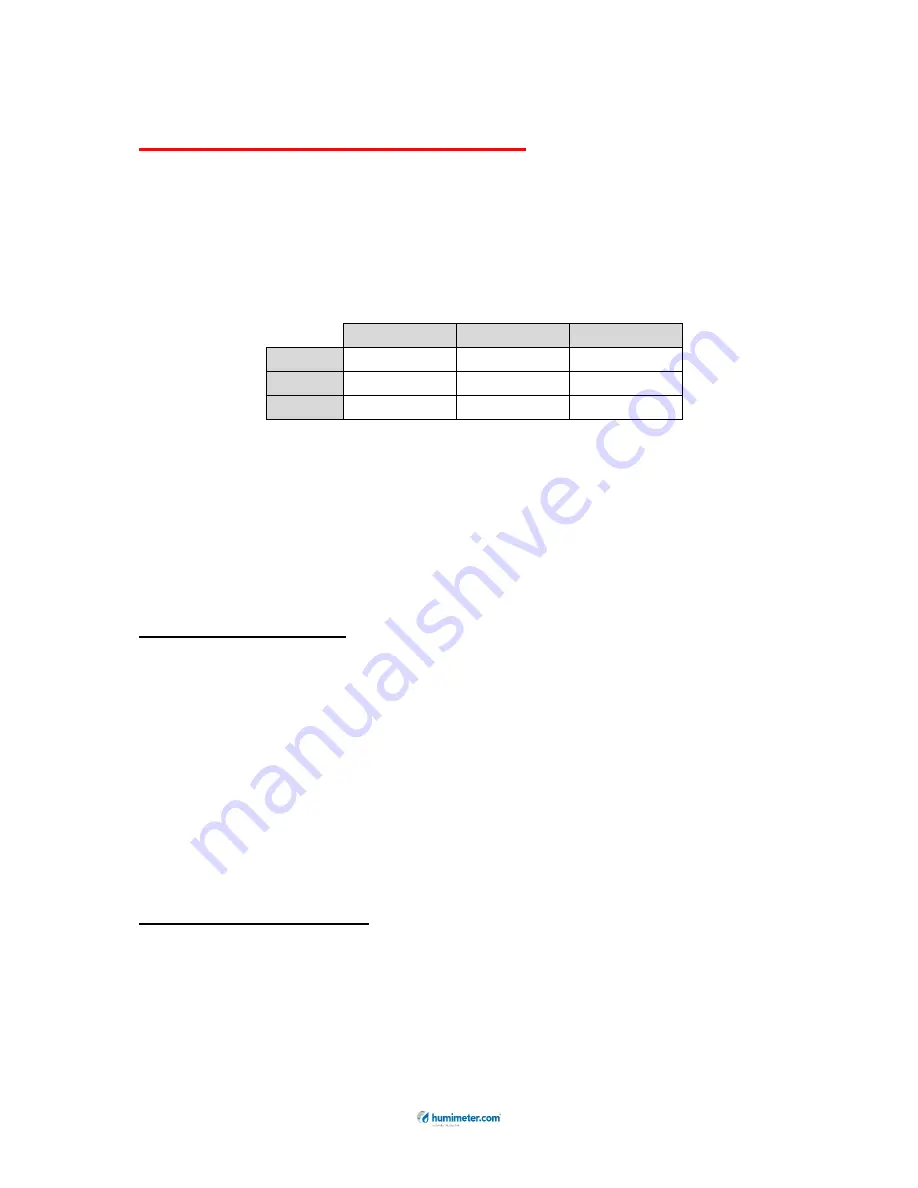
version 1.2_en
page 25
Information for measuring air humidity and temperature
IMPORTANT: temperature adjustment!
To demonstrate the importance of temperature adjustment between
measuring device and material to measure, the following chart shows the
measuring error at a temperature difference of only 1°C / 1.8°F with various
surrounding temperatures.
10°C (50°F) 20°C (68°F) 30°C (86°F)
10%r.F.
±0.7%
±0.6%
±0.6%
50%r.F.
±3.5%
±3.2%
±3.0%
90%r.F.
±6.3%
±5.7%
±5.4%
At room temperature (20°C/ 68°F) and a supposed moisture value of 50% r.h.
a temperature difference of 1°C / 1.8°F adds up to a measuring error of 3.2%
r.h. A temperature difference of 3°C / 5.4°F leads to a measuring error of more
than 10%.
Further examples can be found in the h-x diagram of Mollier.
Relative air humidity
indicates the relation between the current water vapour pressure and the
maximum possible water vapour pressure (called saturation vapour pressure)
The relative humidity shows the degree the air is saturated with water vapour.
For example:
50% relative humidity indicates that at the current temperature and the current
pressure the air is saturated with water vapour for half of its value, 100 %
relative humidity means that the air is totally saturated. When the air has more
than 100 % of relative humidity, the excessive moisture would condense or
form fog.
Dew point temperature
The dew point indicates that temperature the not completely saturated air has
to reach in order to be completely saturated with water vapour. If the room
with the current relative humidity is cooled down to the dew point temperature,
the water vapour begins to condense.


























